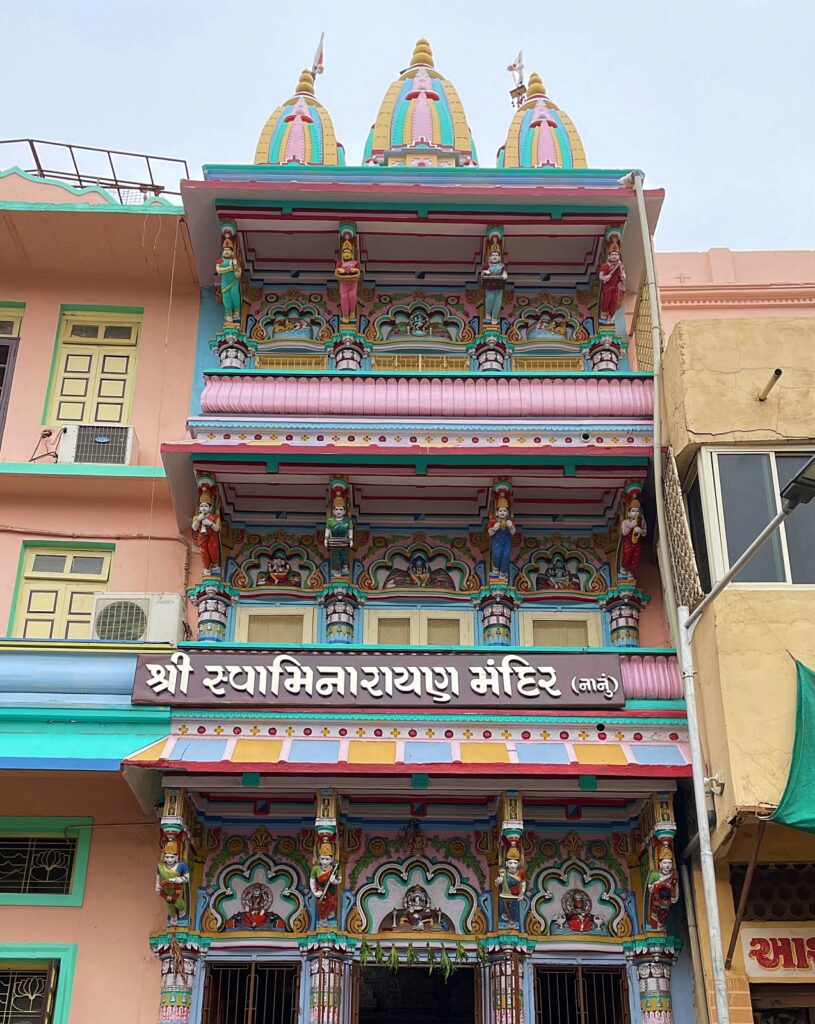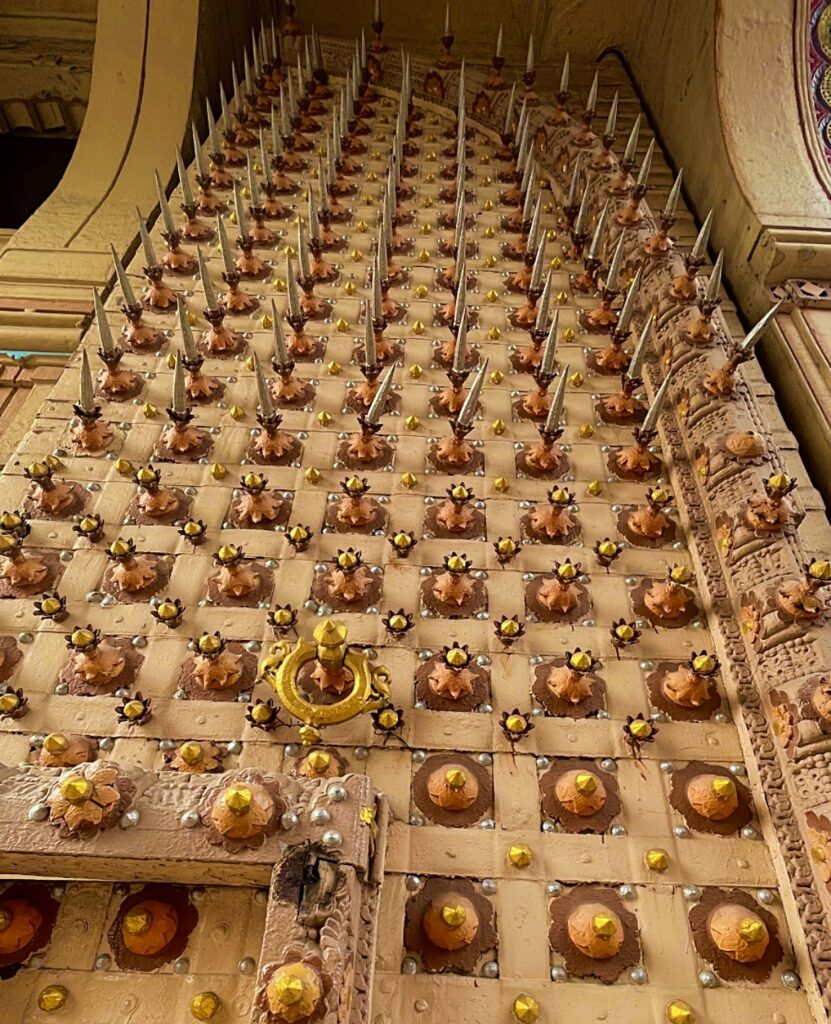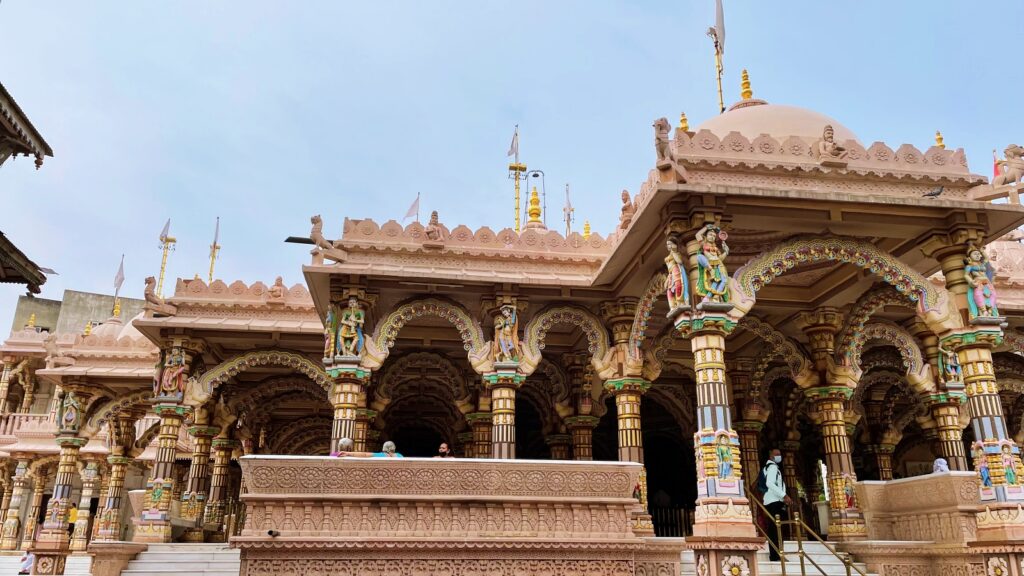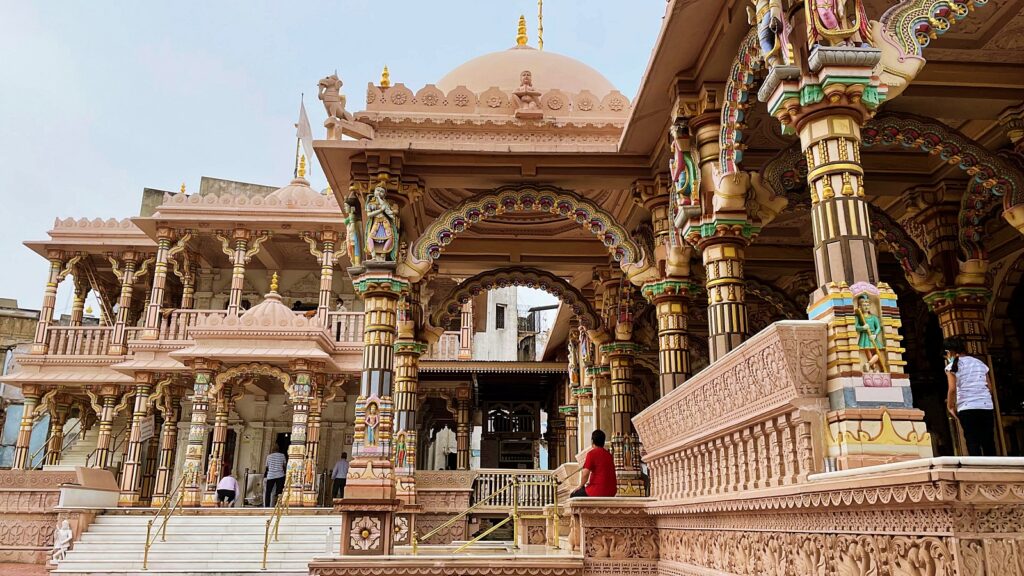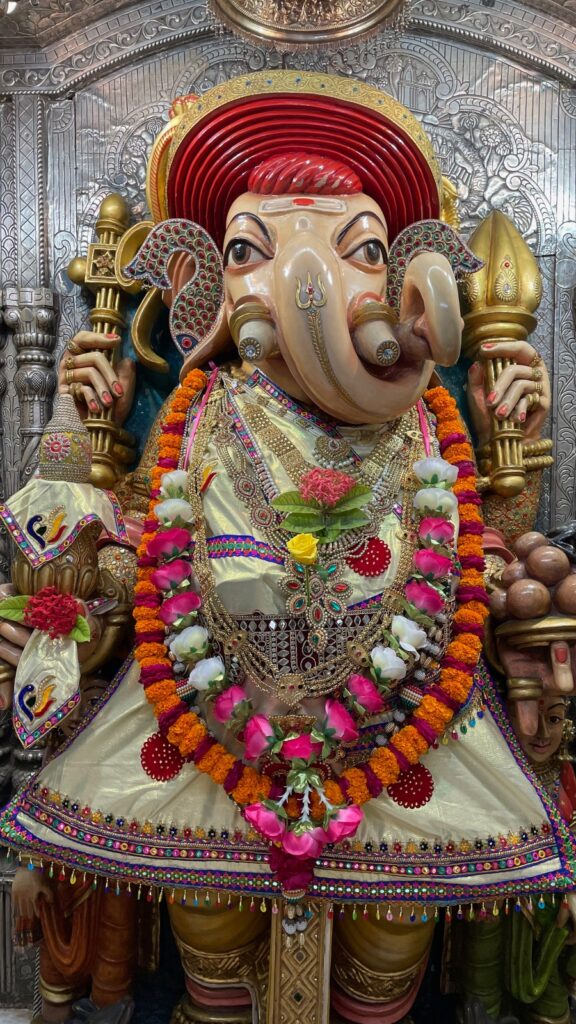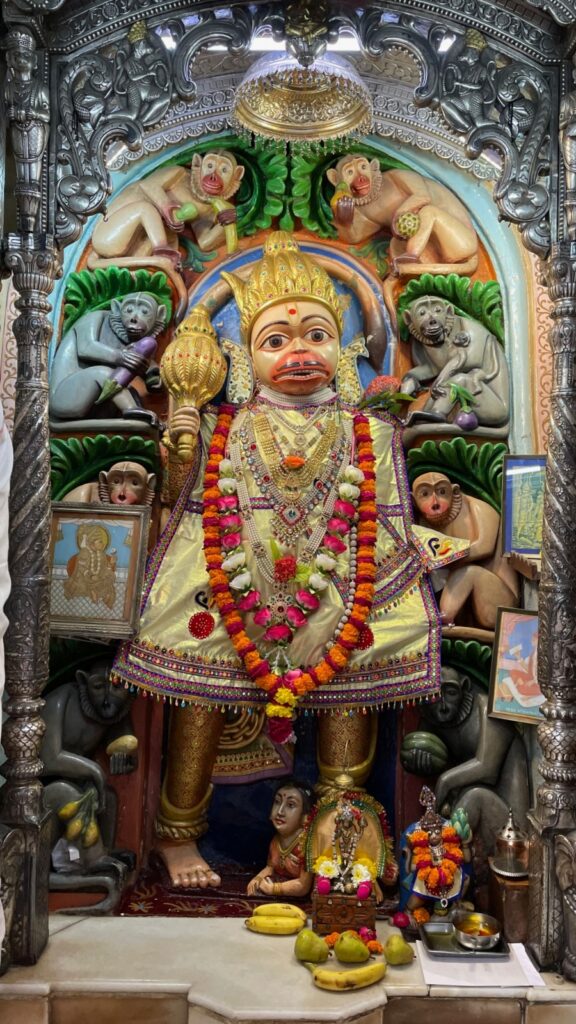Visit Swaminarayan Temple in Ahmedabad
When I recently travelled to Ahmedabad with Gujarat Tourism Board, I took the heritage walk, which introduced me to the city’s most important temple, Pols and the mosque. The Ahmedabad Heritage Walk began at the enchanting Swaminarayan Temple in Kalupur, one of India’s most revered shrines. This temple is notable because it is the first Mandir (temple) Hindu sect of the Swaminarayan Sampraday. As history goes, the founder of the sect, Shree Swaminarayan, instated the construction of this stunning Swaminarayan Temple.

In his testament, he divided the Swaminarayan Sampraday administration into two seats, Laxmi Narayan Dev Gadi and Nar Narayan Dev Gadi. The Nar Narayan Dev Gadi is depicted by Swaminarayan Mandir. The divinities worshipped in this temple are Bal Swarup Ghanshyam Maharaj, Dharmabhaktimata, Hari Krushna Maharaj, Nar Narayan Dev, Radha Krishna Dev, and Ranghmohal Ghanshyam Maharaj. Sanket, our tour guide, put a spotlight on the intriguing history of this grand 1866 temple before we could make it to the other side of the big beautiful gate.
Yes, Swaminarayan Mandir is an 18th-century temple, yet it is so flawlessly maintained that it feels as if you are viewing a newly constructed structure. Light showers hung in the air to my benefit, making the temple sparkle brighter. According to what I’ve learned, the British Imperial Government gave this land to the Swaminarayan Sampraday as a gift. Swaminarayan delegated the construction of the Mandir to Ananandand Swami at the time. As per the legend, British officer Dunlop was charmed by Swaminarayan and his followers.

This was one of the reasons why the government donated 5,000 acres of land for the temple’s construction. Furthermore, the temple received a 101-gun salute upon completion. To make space for a railway station, the British government granted the Swaminarayan temple 1,000 acres of property in the nearby village of Narayannagar in exchange for turning over a portion of its land. There were designs on the wall depicting scriptural norms of the sect that I had to pass by to have a better look. It was now time for me to walk through the imposing gate and take a closer look at designs illustrating the scriptural norms of the sect.

Sanket went on to say that the temple’s complete architecture is made of Burma teak wood and that the temple’s colourful arches and brackets are typical of Swaminarayan temples. The temple is ornately carved, and frame after frame, you’ll see a series of sculptural episodes of deities and auspicious icons symbolising Indian culture’s traditional religious beliefs. If you look closely, you’ll discover some sculptural art depicting India’s first independence battle. Regardless of the peculiar irony, let us have a look at the various Swaminarayan temple parts.
Table of Contents
Nar Narayan Temple
Nar Narayan Mandir, the temple’s central building, is a very dreamlike structure. The complex Burma-teak carvings that Sanket had mentioned previously had now come to life. Every visitor was wearing a mask and appeared to be following the temple’s strict requirements for sanitation. I wandered around the Nar Narayan Temple, admiring the temple’s scriptural norms. The temple’s deities are also given a makeover, with a dash of glamour.

They have a massive collection of clothes, and their outfits are changed seven times a day and never repeated. Images of Narnarayan Dev, Radhakrishna Dev, Dharmadev, BhaktiMata, and Harikrishna can be seen among the carvings of the ruling deities and fortunate symbols. These images are carved in Himmatnagar stone and then transformed into concrete sculptures in Dungarpur.
Akshar Bhavan

The white marble infant idol of Ghanshyam Maharaj is housed at Akshar Bhavan, on the ground level. The southern wing of this temple, known as Tejendra Bhuvan, is where pilgrims who are on their way to other temples stay. The personal items of Shree Swaminarayan are on exhibit on both the ground floor and the first floor of the temple, dedicated to him.
West Temple for Women (Stri Vibhag)
Back in the day, Nar Narayan Dev Gadi lived in the Haveli on the western side of the temple. The ground floor is now furnished with offices. On the inside, the Sankhya Yogi ladies live, who have taken celibacy vows and dedicated their lives to the temple. I didn’t get a chance to visit the inside of the estate, but according to Sanket, it’s decked up with magnificent hanging lamps, stunning chandeliers, and enormous mirrors.

Geometrical sculptures and floral and vine themes adorn the portico’s arches and pillars. Gadiwalla, the Acharya’s wife, spiritually guides the Swaminarayan Sampraday ladies and holds sacred meetings for Sankhya Yogi women devotees in the inner temple, which houses an idol of Ghanshyam Maharaj.
RangMahol, Swaminarayan Temple
RangMahol in Swaminarayan Temple has the idol of Ghanshyam Maharaj, where Swaminarayan resided during his Ahmedabad trips. What makes this place unique is the presence of a life-size wood-carved statue of Swaminarayan in the Sambhang pose. This idol, which was put 50 years after the temple was built, is one of Gujarat’s most stunning examples of wooden art.
The Eastern Haveli

The Haveli in the East is a two-storey mansion with a ground-floor porch filled with flowers and animal sculptures, vine-carved wooden pillars, and Nar Narayan Dev-related items. An academy on the first and second floors teaches Sanskrit and music and houses the saints. The Brahmachari (celibate) students’ residences and the well where Shree Swaminarayan previously bathed are both located in the garden of the Eastern Haveli.
The Northern Haveli of Swaminarayan Temple
Acharya Keshavprasad Maharaj pitched the three-storey Northern Haveli in the 18th century as a residence for himself and his family. The wooden seat utilised by Acharya Shree Swaminarayan is one of the most notable features of this Haveli. There are sixty intricately carved pillars in the Sabha Mandap, the main hall. The pillars were adorned with Ardh-Murt sculptures depicting flowers and flora, in 1871. There are twelve gigantic Madal Shilp sculptures on the first-floor porch in front of the building.
The pot-bellied Lord Ganesha wearing a South Indian bright red turban, a flock of monkeys, flying Hanuman with Devgiri mountain, and small depictions of warriors dressed in Marathi clothes are among the most remarkable sculptures. The 1857 revolt is shown on twelve additional pillars, including Maratha warrior Rani of Jhansi dressed as Durga and other military heroes such as Tatya Tope.

The balconies are supported by hand-carved symmetrical Bharnai and angles of wooden pillars, and more under sections are ornamented, with artistic free-hand designs. Birds, elephants, lions, peacocks, parrots, and finely etched panels with flowers and foliage are among the sculptures in the Northern Haveli.

This house also has the freshly added Vrajendraprasad Mahal (saints’ dwelling) with a dining hall. Overall, Swaminarayan Temple has so much to admire that I’ll have to return several times to see every inch of this majestic building. Because the visiting hours are limited to 5 AM to 12 PM and 4 PM to 8 PM, the Ahmedabad Heritage Walk I took permitted me 35 minutes on the premises. If you want to spend more time at the temple complex, you can schedule a temple excursion on your own.
Address: Swaminarayan Mandir Road, Old City, Kalupur, Ahmedabad, Gujarat
Foundation Date: 1876 (Vikram Samvata)

